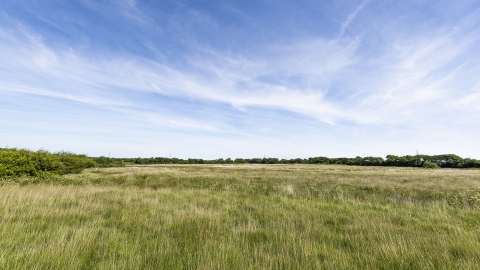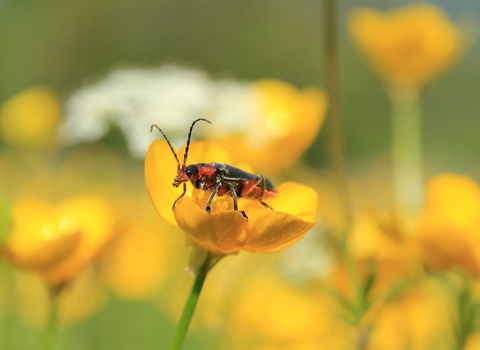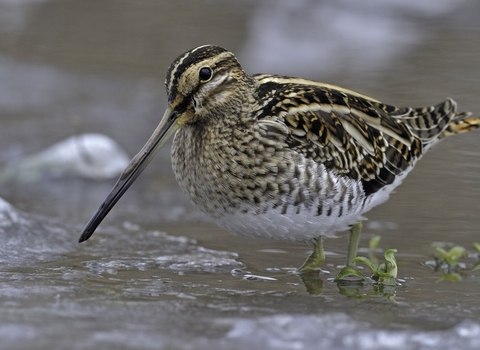
Ben Watkins
Location
From the A39, 5 miles (7.5 km) south of Bude, take the turning for Week St Mary. In Week St Mary turn right towards Week Green, then fork right. Access to the reserve is via a path off to the left, ¾ mile along this road. A limited amount of parking is available.
View on What3Words
Know before you go
Dogs
When to visit
Opening times
Open at all timesBest time to visit
April to AugustAbout the reserve
Greena Moor is Cornwall’s finest area of rhos pasture or ‘culm grassland’; an internationally rare grassland type that only be found in a few places throughout the whole of the UK.
The nature reserve - managed in partnership with Plantlife - was once part of an open landscape of heathy moorland used for common grazing. In the 19th century it was sub-divided (enclosed) and many of the new fields were then ‘tamed’ by agriculture. Only a fraction of the ancient moor survives today.
Greena Moor is home to nationally important flora such as the rare, white flowered, threelobed crowfoot, which dwells in shallow pools, and whorled caraway, so named for the way its leaves form a circle or ‘whorl’ around the base of its stem.
In 2013, this nature reserve was declared the Coronation Meadow for Cornwall. Coronation Meadows identified within every county in the UK were each used as a source of seed to create one or more new meadows at nearby ‘receptor’ sites.
Over spring and summer, the reserve is alive with colour due to the abundance of other wildflowers. At this time of year, visitors will see the lilac ‘smocks’ of the cuckooflower, the shiny yellow marsh-marigold that heralds the start of the flowering season, the jewellike white flowers of fen bedstraw, and pale purple ling heather, to name a few!
The site is also home to important butterflies, with the extremely rare marsh fritillary found here, along with the marbled white. Other insects that can be seen include burnet moths (five and six-spot) which zip between flowers, and golden-ringed dragonflies, which are easily identified by their distinctive black and yellow stripes.
The reserve’s habitats are also well-suited to ground-nesting birds, such as skylarks and meadow pipits.
Sleek, compact roe deer, with their reddish brown coats, white rumps and black noses, are often seen feeding out in the fields early in the morning or evening.







